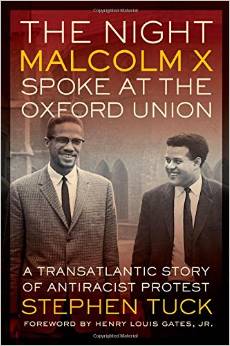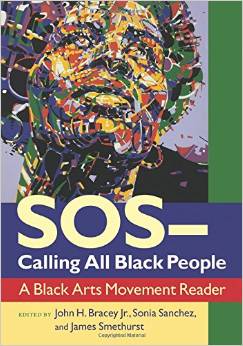
Interesting reads.
1. The Night Malcolm X Spoke at the Oxford Union: A Transatlantic Story of Antiracist Protest (George Gund Foundation Imprint in African American Studies)
by Stephen Tuck (Author), Henry Louis Gates Jr. (Foreword)
Less than three months before he was assassinated, Malcolm X spoke at the Oxford Union—the most prestigious student debating organization in the United Kingdom. The Oxford Union regularly welcomed heads of state and stars of screen and served as the training ground for the politically ambitious offspring of Britain’s better classes. Malcolm X, by contrast, was the global icon of race militancy. For many, he personified revolution and danger. Marking the fiftieth anniversary of the debate, this book brings to life the dramatic events surrounding the visit, showing why Oxford invited Malcolm X, why he accepted, and the effect of the visit on Malcolm X and British students.
Stephen Tuck tells the human story behind the debate and also uses it as a starting point to discuss larger issues of Black Power, the end of empire, British race relations, immigration, and student rights. Coinciding with a student-led campaign against segregated housing, the visit enabled Malcolm X to make connections with radical students from the Caribbean, Africa, and South Asia, giving him a new perspective on the global struggle for racial equality, and in turn, radicalizing a new generation of British activists. Masterfully tracing the reverberations on both sides of the Atlantic, Tuck chronicles how the personal transformation of the dynamic American leader played out on the international stage.
2. Witness: Art and Civil Rights in the Sixties
by Teresa A. Carbone (Editor), Kellie Jones (Editor), Connie Choi (Contributor).
Over 100 works by African American artists and others from the 1960s Civil Rights Movement show powerful responses in art to events of black history. Marking the fiftieth anniversary of the Civil Rights Act of 1964, Witness accompanies an exhibition organized by the Brooklyn Museum and demonstrates the array of aesthetic strategies through which 1960s artists engaged in the struggle for racial justice. Personal recollections from artists including Mark di Suvero and Jack Whitten intertwine with rich illustration, engaging essays, and documentary photos—including Dr. Martin Luther King, Jr. and freedom marchers on the Selma-to-Montgomery March, and Gordon Parks’s photos of the Black Panther Party and Muhammad Ali—along with a comprehensive chronology of the period from 1954 to the 1970s.
African American artists featured include Romare Bearden, Elizabeth Catlett, David Hammons, and Melvin Edwards. Represented as well are notable artists who recorded aspects of the Civil Rights struggle, including Richard Avedon, Bruce Davidson, Andy Warhol, Robert Indiana, and Philip Guston. This collection of emotionally resonant artworks lets us see the Civil Rights movement with new eyes and is a fitting tribute to a turbulent period in history, whose struggles continue to shape America.
3. African American Connecticut Explored (Garnet Books)
by Elizabeth J. Normen (Editor), Katherine J. Harris (Contributor), Stacey K. Close (Contributor).
The numerous essays by many of the state’s leading historians in African American Connecticut Explored document an array of subjects beginning from the earliest years of the state’s colonization around 1630 and continuing well into the 20th century. The voice of Connecticut’s African Americans rings clear through topics such as the Black Governors of Connecticut, nationally prominent black abolitionists like the reverends Amos Beman and James Pennington, the African American community’s response to the Amistad trial, the letters of Joseph O. Cross of the 29th Regiment of Colored Volunteers in the Civil War, and the Civil Rights work of baseball great Jackie Robinson (a twenty-year resident of Stamford), to name a few. Insightful introductions to each section explore broader issues faced by the state’s African American residents as they struggled for full rights as citizens. This book represents the collaborative effort of Connecticut Explored and the Amistad Center for Art & Culture, with support from the State Historic Preservation Office and Connecticut’s Freedom Trail. It will be a valuable guide for anyone interested in this fascinating area of Connecticut’s history.
Contributors include Billie M. Anthony, Christopher Baker, Whitney Bayers, Barbara Beeching, Andra Chantim, Stacey K. Close, Jessica Colebrook, Christopher Collier, Hildegard Cummings, Barbara Donahue, Mary M. Donohue, Nancy Finlay, Jessica A. Gresko, Katherine J. Harris, Charles (Ben) Hawley, Peter Hinks, Graham Russell Gao Hodges, Eileen Hurst, Dawn Byron Hutchins, Carolyn B. Ivanoff, Joan Jacobs, Mark H. Jones, Joel Lang, Melonae’ McLean, Wm. Frank Mitchell, Hilary Moss, Cora Murray, Elizabeth J. Normen, Elisabeth Petry, Cynthia Reik, Ann Y. Smith, John Wood Sweet, Charles A. Teale Sr., Barbara M. Tucker, Tamara Verrett, Liz Warner, David O. White, and Yohuru Williams.
4. SOS – Calling All Black People: A Black Arts Movement Reader
by John H. Bracey Jr. (Editor), Sonia Sanchez (Editor), James Smethurst (Editor)
This volume brings together a broad range of key writings from the Black Arts Movement of the 1960s and 1970s, among the most significant cultural movements in American history. The aesthetic counterpart of the Black Power movement, it burst onto the scene in the form of artists circles, writers workshops, drama groups, dance troupes, new publishing ventures, bookstores, and cultural centers and had a presence in practically every community and college campus with an appreciable African American population. Black Arts activists extended its reach even further through magazines such as Ebony and Jet, on television shows such as Soul! and Like It Is, and on radio programs.
Many of the movement s leading artists, including Amiri Baraka, Ed Bullins, Nikki Giovanni, Woodie King, Haki Madhubuti, Sonia Sanchez, Askia Touré, and Val Gray Ward remain artistically productive today. Its influence can also be seen in the work of later artists, from the writers Toni Morrison, John Edgar Wideman, and August Wilson to actors Avery Brooks, Danny Glover, and Samuel L. Jackson, to hip hop artists Mos Def, Talib Kweli, and Chuck D.
S.O.S Calling All Black People includes works of fiction, poetry, and drama in addition to critical writings on issues of politics, aesthetics, and gender. It covers topics ranging from the legacy of Malcolm X and the impact of John Coltrane s jazz to the tenets of the Black Panther Party and the music of Motown. The editors have provided a substantial introduction outlining the nature, history, and legacy of the Black Arts Movement as well as the principles by which the anthology was assembled.




